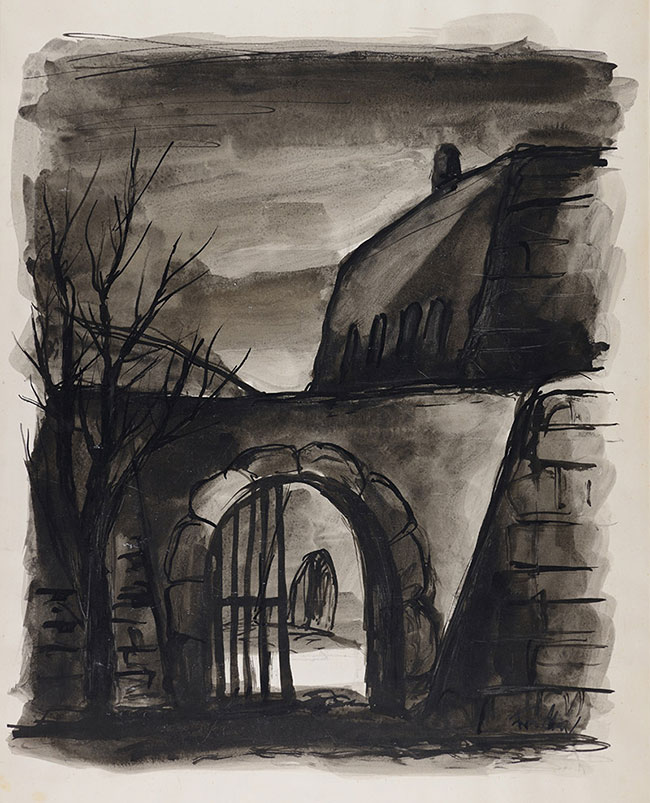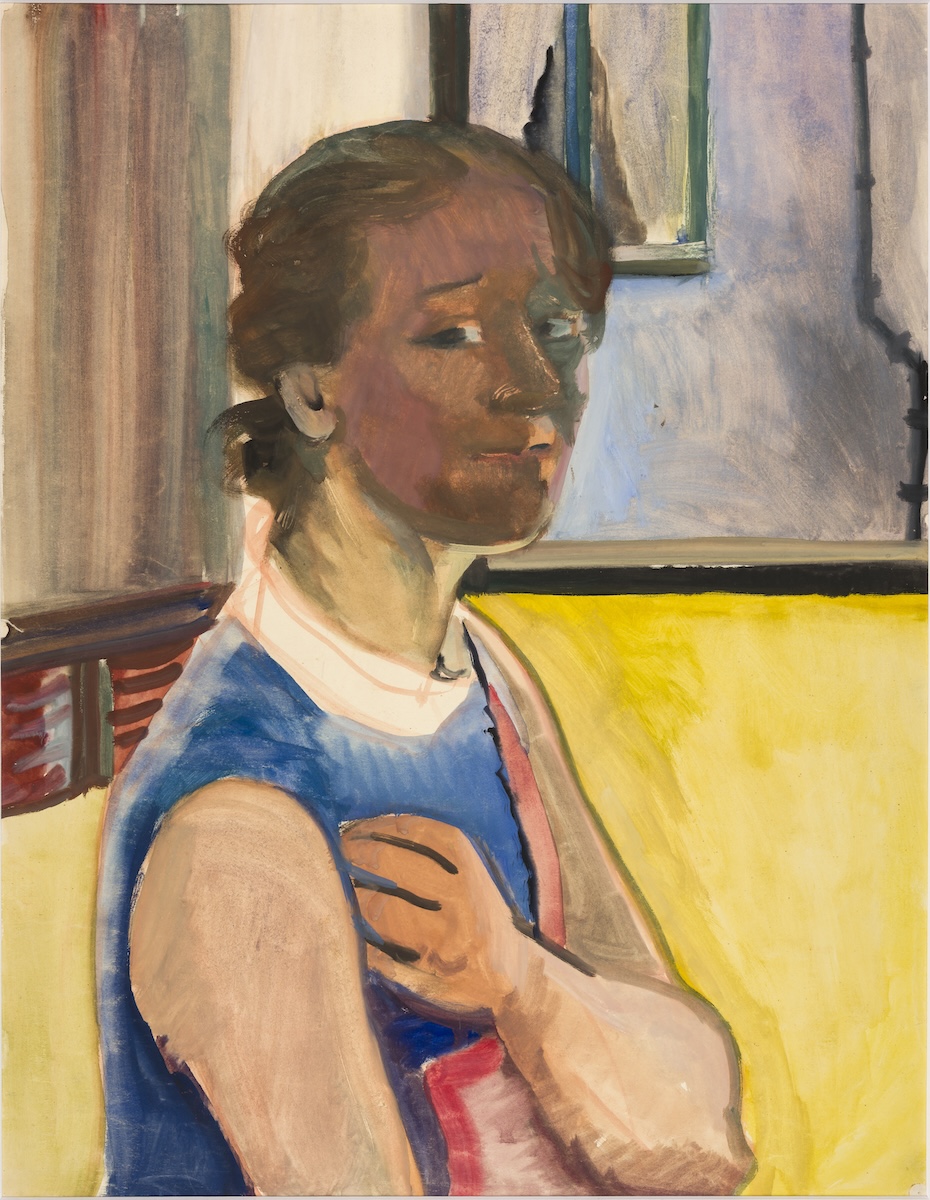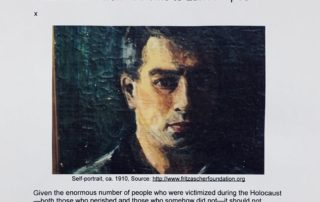Rachel Stern2025-07-23T18:00:05-04:00July 1st, 2025|Events, Lectures, Past Events|
This image-rich talk by Georgetown University professor Ori Z Soltes considers some of the many Jewish artists destroyed by the Holocaust who had either begun or were poised to add significant threads to the tapestry of twentieth century visual art. Some are now well-known and others remain obscure—but what if artists like Charlotte Salomon and Felix Nussbaum or like Erna Dem and Fritz Taussig had survived to do more art? What additional significant contributions might they have made? Image above: Bedřich Fritta (Friedrich Taussig), Rear Entrance, Theresienstadt Ghetto, 1941–1944. India ink and wash on paper, 51 x 36.5 cm Collection of the Yad Vashem Art Museum, Jerusalem. Gift of the Prague Committee for Documentation, courtesy of Ze'ev and Alisa Shek, [...]
Rachel Stern2024-11-20T13:50:30-05:00October 11th, 2024|Events, Lectures, Past Events|
Felka Platek (1899 Warsaw – 1944 Auschwitz) came to Berlin from Warsaw in the early 1920s to become a painter. In 1932 she followed her friend and later husband Felix Nussbaum (1904 Osnabrück – 1944 Auschwitz) to Italy. In 1935 they decided to go into exile in Belgium. However, neither of them could escape persecution by the Nazis. They were captured in their hiding place in Brussels on June 21, 1944 and murdered in Auschwitz shortly afterwards. Image above: Felka Platek, Self-portrait in front of an open window, around 1940. Gouache on drawing paper, 65 x 49.7 cm. Felix-Nussbaum-Haus at Museumsquartier Osnabrück, on permanent loan from the Felix Nussbaum Foundation, photo © Felix-Nussbaum-Haus Osnabrück Anne [...]
Elizabeth Berkowitz2020-10-07T15:08:59-04:00September 16th, 2020|Lectures|
WATCH THE RECORDING OF THIS EVENT HERE. Lecture featuring Anne Sibylle Schwetter, Curator of the Felix Nussbaum Collection in the Felix Nussbaum House in the Osnabrück Museum Quarter, Osnabrück Moderated by Rachel Stern, Executive Director of the Fritz Ascher Society in New York The German-Jewish artist Felix Nussbaum (1904 Osnabrück - 1944 Auschwitz) started a promising career in Berlin around 1930, which ended abruptly when the National Socialists came to power in 1933. Years in exile in Italy and Belgium followed. In 1942 Nussbaum went into hiding in Brussels. The artist's last paintings were created here from June 1943 until shortly before his arrest in June 1944. A little later he was murdered in Auschwitz. Like hardly any other painter [...]
Rachel Stern2020-10-07T15:06:33-04:00August 31st, 2020|Events, Past Events|
WATCH THE RECORDING OF THIS EVENT HERE. Lecture featuring Anne Sibylle Schwetter, Curator of the Felix Nussbaum Collection in the Felix Nussbaum House in the Osnabrück Museum Quarter, Osnabrück Moderated by Rachel Stern, Executive Director of the Fritz Ascher Society in New York The German-Jewish artist Felix Nussbaum (1904 Osnabrück - 1944 Auschwitz) started a promising career in Berlin around 1930, which ended abruptly when the National Socialists came to power in 1933. Years in exile in Italy and Belgium followed. In 1942 Nussbaum went into hiding in Brussels. The artist's last paintings were created here from June 1943 until shortly before his arrest in June 1944. A little later he was murdered in Auschwitz. Like hardly any other painter [...]
Rachel Stern2021-02-25T04:48:57-05:00January 18th, 2015|Select Press Coverage|
Fritz Ascher: from Golems to Landscapes by Ori Z. Soltes Given the enormous number of people who were victimized during the Holocaust—both those who perished and those who somehow did not—it should not surprise us that, as time goes by, narratives still continue to emerge reflecting the varied experiences of these victims and their tormentors or saviors. Among these there are many artists—artists, like Felix Nussbaum (1904-1944), who were producing high-level work, and others less skilled—who did not survive but left behind bodies of work that provoke the question: what if? Had these artists not been destroyed by the Nazis, what might they have accomplished and what songs of praise might art historians now be singing about them? There [...]






